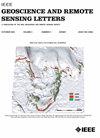Semisupervised Classification of Polarimetric SAR Image via Superpixel Restrained Deep Neural Network
IF 4
3区 地球科学
Q2 ENGINEERING, ELECTRICAL & ELECTRONIC
引用次数: 41
Abstract
The classification of polarimetric synthetic aperture radar (PolSAR) image is of crucial significance for SAR applications. In this letter, a superpixel restrained deep neural network with multiple decisions (SRDNN-MDs) is proposed for PolSAR image classification, which not only extracts effective superpixel spatial features and degrades the influence of speckle noises but also deals with the limited training samples. First, the polarimetric features of coherency matrix and Yamaguchi decomposition are extracted as initial features, and superpixel segmentation is conducted on the Pauli color-coded image to acquire the superpixel averaged features. Then, an SRDNN based on sparse autoencoders is proposed to capture superpixel correlative features and reduce speckle noises. After that, MDs, including nonlocal decision and local decision, are developed to select credible testing samples. Finally, our deep network is updated by the extended training set to yield the final classification map. Experimental results demonstrate that the proposed SRDNN-MD yields higher accuracies compared with other related approaches, which indicate that the proposed method is able to capture superpixel correlative information and adds the information of unlabeled samples to improve the classification performance.基于超像素约束深度神经网络的极化SAR图像半监督分类
极化合成孔径雷达(PolSAR)图像的分类对SAR应用具有重要意义。本文提出了一种基于多决策的超像素约束深度神经网络(SRDNN-MDs)的PolSAR图像分类方法,该方法不仅提取了有效的超像素空间特征,降低了散斑噪声的影响,而且处理了有限的训练样本。首先,提取相干矩阵极化特征和Yamaguchi分解特征作为初始特征,对泡利彩色编码图像进行超像素分割,获取超像素平均特征;然后,提出了一种基于稀疏自编码器的SRDNN来捕获超像素相关特征并降低散斑噪声。然后,建立非局部决策和局部决策模型,选择可信的测试样本。最后,我们的深度网络被扩展的训练集更新,从而得到最终的分类图。实验结果表明,与其他相关方法相比,本文提出的SRDNN-MD方法获得了更高的准确率,这表明该方法能够捕获超像素相关信息,并加入未标记样本的信息以提高分类性能。
本文章由计算机程序翻译,如有差异,请以英文原文为准。
求助全文
约1分钟内获得全文
求助全文
来源期刊

IEEE Geoscience and Remote Sensing Letters
工程技术-地球化学与地球物理
CiteScore
7.60
自引率
12.50%
发文量
1113
审稿时长
3.4 months
期刊介绍:
IEEE Geoscience and Remote Sensing Letters (GRSL) is a monthly publication for short papers (maximum length 5 pages) addressing new ideas and formative concepts in remote sensing as well as important new and timely results and concepts. Papers should relate to the theory, concepts and techniques of science and engineering as applied to sensing the earth, oceans, atmosphere, and space, and the processing, interpretation, and dissemination of this information. The technical content of papers must be both new and significant. Experimental data must be complete and include sufficient description of experimental apparatus, methods, and relevant experimental conditions. GRSL encourages the incorporation of "extended objects" or "multimedia" such as animations to enhance the shorter papers.
 求助内容:
求助内容: 应助结果提醒方式:
应助结果提醒方式:


